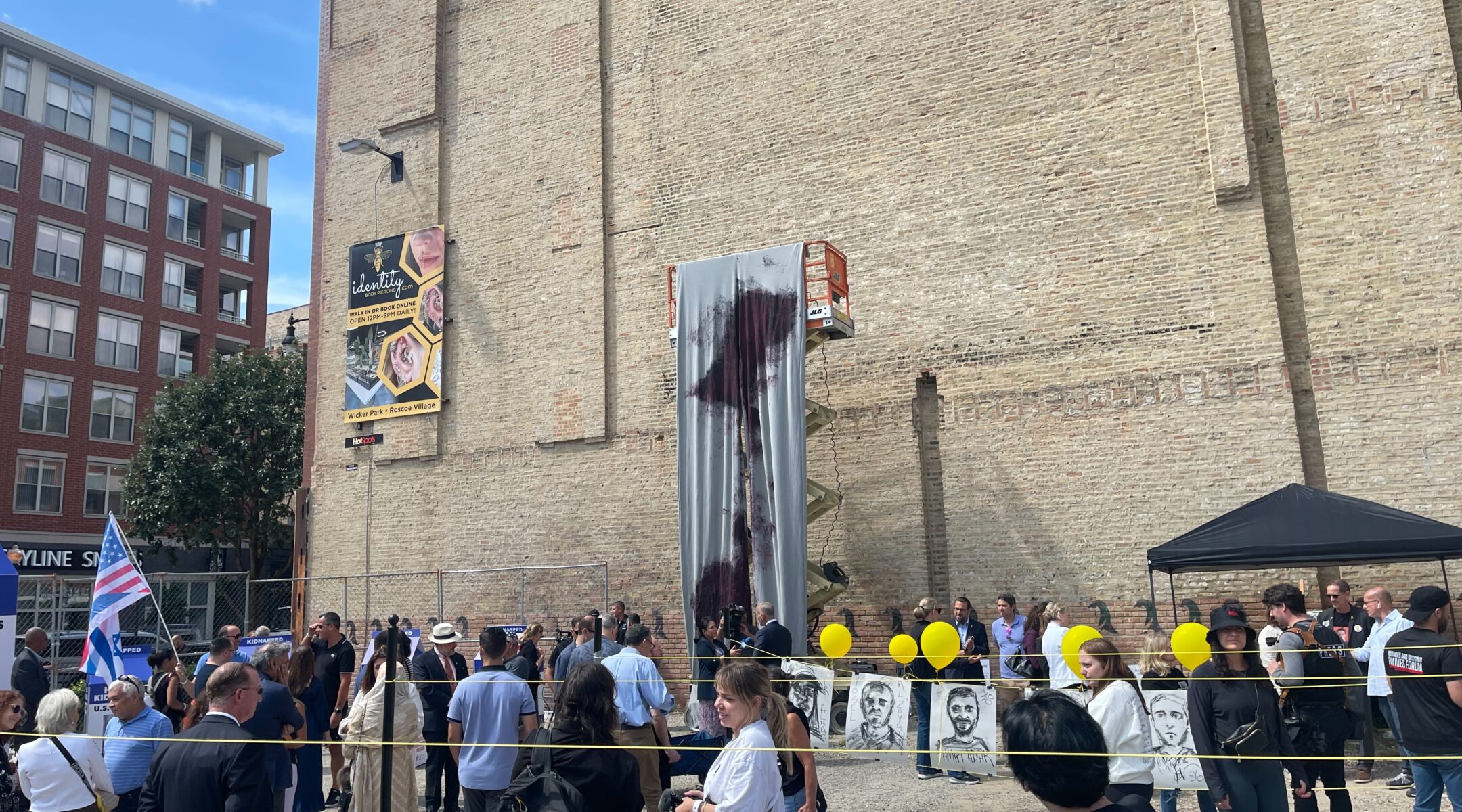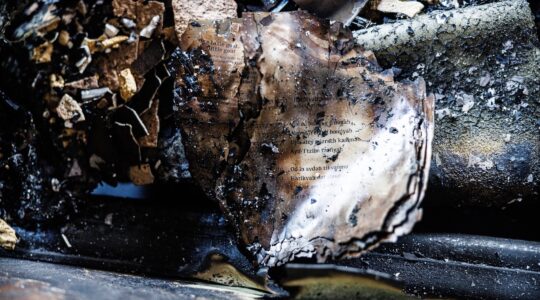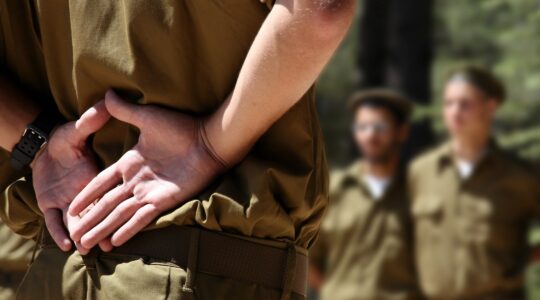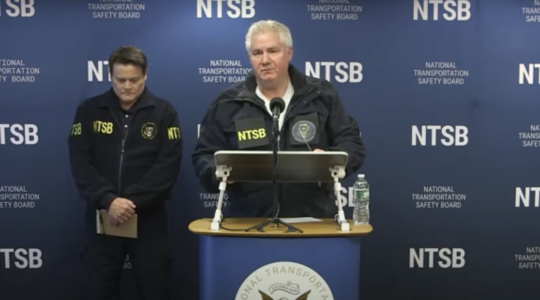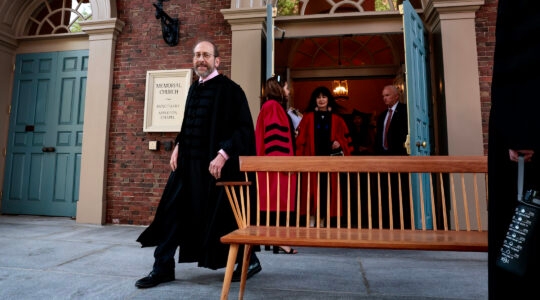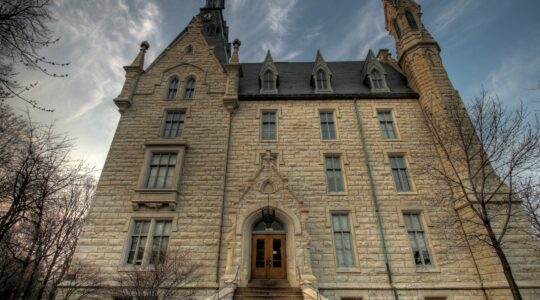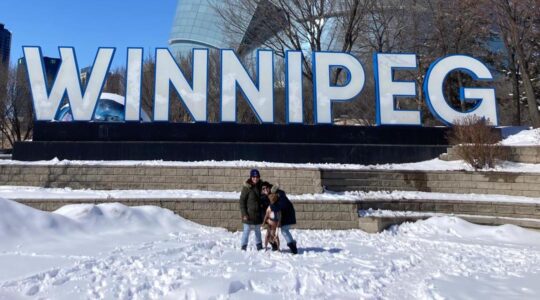CHICAGO — In March, Noah Elder traveled to Israel with Healing Ink, a group that applies tattoos to cover the scars of violence.
On Tuesday, he was back in his hometown, crouched on the gravel in an empty lot about a mile from the Democratic National Convention, making delicate curved lines on a canvas. He was drawing a koi fish, which in Japanese tattoo art represents resilience, in a replica of a design he had applied to an Israeli victim of Hamas’ Oct. 7 attack.
“I took the concept, brought it onto canvas on a bigger scale, telling the same story that her tattoo was meant to tell, but just on a larger format — keeping her story alive,” Elder said.
Elder was one of a number of artists who participated in a pop-up version of Tel Aviv’s Hostage Square, which has become a rallying point for the effort to bring the captives home.
The installation, mounted by the Israeli-American Council to accompany the convention, wasn’t an art show. It was also not a rally, which the organization had wanted to hold. The group decided that the venue the city offered was too far from the United Center, where the convention is taking place, and instead opted to make use of a privately owned empty lot, which did not require a permit.
The pop-up square was, however, meant to be a deliberate repudiation of the raucous protests that a coalition of pro-Palestinian groups had planned for the first day of the convention. (Hopes for massive turnout fizzled, though several thousand people participated.)
The contrast was the point, said Elan Carr, the Israel-American Council’s CEO, who said the Israelis did not have to shout to get their point across to a sympathetic nation.
“We thought art is the best way to draw attention to the horrific plight of these hostages,” Carr said. “This is heart-wrenching stuff. The noise we see out in the streets, these people who burn flags and vandalize buildings and tear things down — they represent a fringe extreme group.”
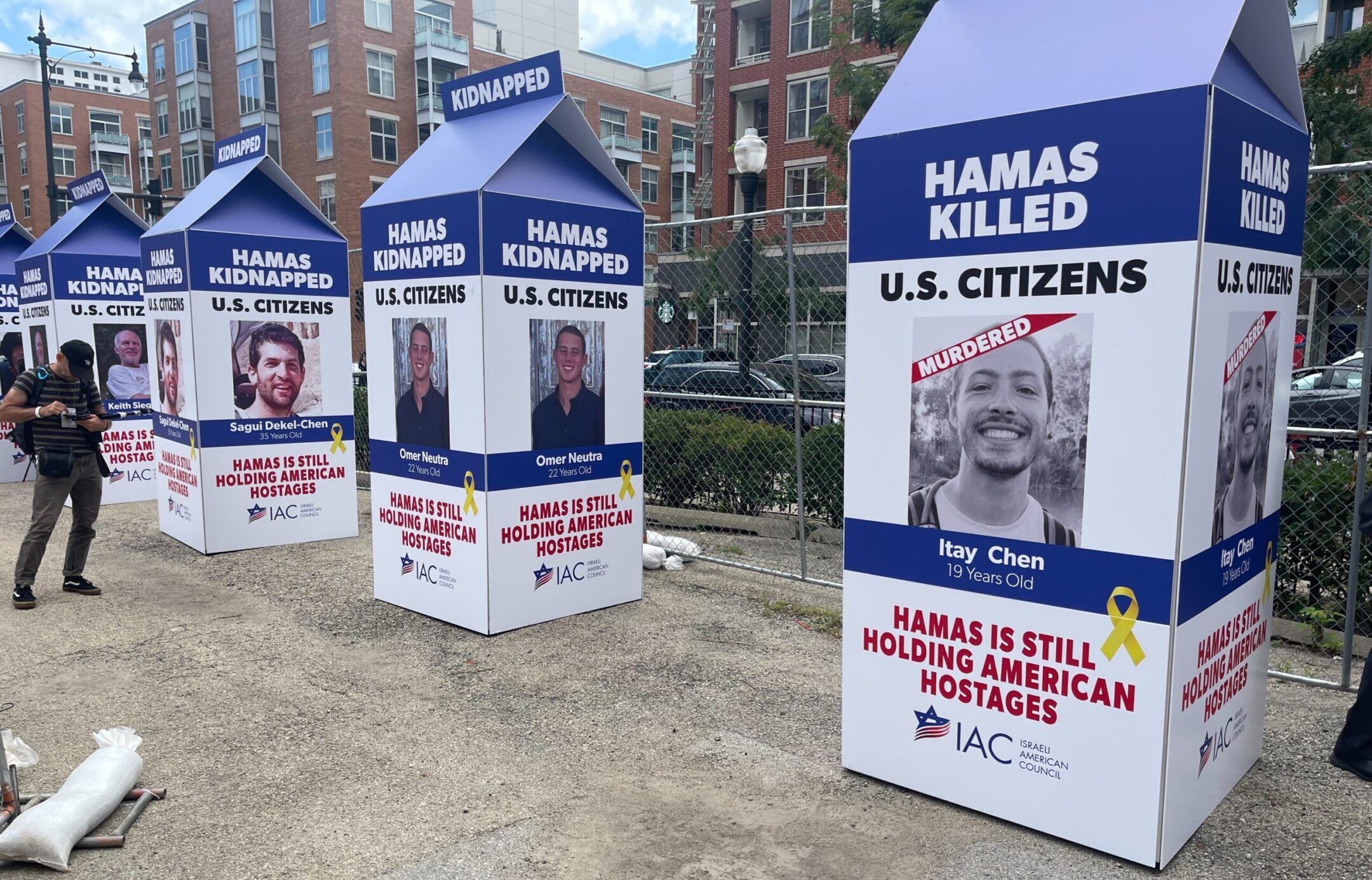
Large milk cartons featuring American citizens who are held hostage in Gaza are displayed at an Israeli-American Council installation timed to Democratic National Convention in Chicago, Aug. 20, 2024. (Ron Kampeas)
The pop-up opened shortly after Israel retrieved the bodies overnight of six hostages, including one, Avraham Munder, who had been captured with his wife, daughter and grandson and who was previously thought to be alive.
“It adds to the collective depression, you get out and you hear that sort of news again, poor, innocent, defenseless people, human beings,” said Andrew Krausz, 47. “It could be my grandfather, your grandfather, someone else’s relative. To have endured that kind of experience is just harrowing and horrible.”
Krausz, a Jewish lawyer from London, happened to be in Chicago visiting family and called the local Hostage Square a must-see.
“For anyone with any semblance of sensitivity, it would be difficult to come in here and not feel something, some empathy and some sensitivity, a mixture of sorrow and frustration and heartache,” he said.
Whether the exhibit would attract anyone who had not previously been invested in the plight of the hostages was unclear. Registered attendees got notice of the address only at 7 a.m., a contingency that virtually every Jewish organization running an event this week in Chicago has adopted in order to avoid disruptions from protesters.
People who just turned up were let in as long as they showed identification and gave a phone number. The pop-up closed at the end of the day.
At about noon, the site was sparsely attended and featured a dislocating mix of visuals, with artistic representations of the Oct. 7 killing fields in a fenced in gravel-paved yard abutting a low-slung beige building. Friendly reunions (“We met at seudat shlishit!”) bumped up against quiet sobs.
Neil Salti, a Tel Aviv artist, drove down to the site of the Nova musical festival massacre — where he lost 20 friends — days after Oct. 7.
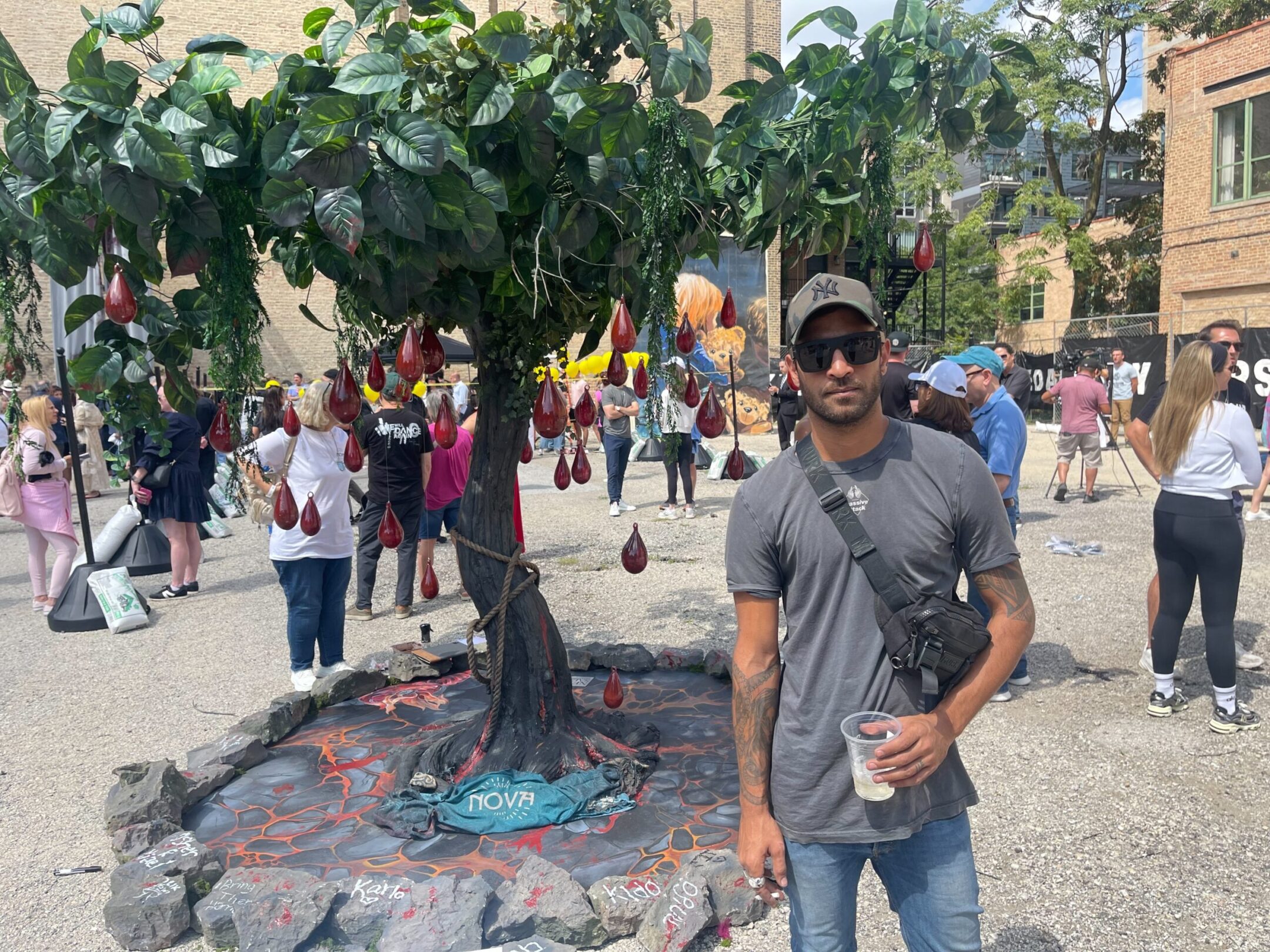
Neil Salti created a tree representing victims of the Oct. 7 Nova massacre for Chicago’s Hostage Square installation, Aug. 20, 2024. (Ron Kampeas)
“I started traveling there in the forest and the venue, and it was so quiet,” he said. “So I was thinking to myself, I wish the trees could talk.”
He drew on that idea when he was asked to join the exhibit, creating a tree that would tell the story of Nova on Oct. 7 — a tree burnt black and dripping with blood red tears.
Passersby were asked to apply messages in white paint on rocks surrounding the tree. One wrote “Sliha,” the Hebrew word that can mean “I’m sorry” as well as “forgiveness.”
Salti agreed to fly in because, viewing American affairs from Israel, he perceived the pro-Palestinian groups as having the upper hand in the public sphere.
“I think what’s going on with all the protests is very, very wrong, because, you know, the protests started a day after the seventh of October, and they did such a horrible thing to us, and they are protesting at us!” he said. “It looks weird. And, you know, I know how much it was real, I had friends there, and I’m still healing. Actually, it’s been a year and I’m still healing.”
Tomer Peretz, a Los Angeles-based Israeli-American artist, mounted a 30-foot high recreation of the bloodstained sweatpants Naama Levy was wearing when she was abducted on Oct. 7. Videos of Levy’s capture went viral.
“Every time I think about the hostages, that’s coming in my mind,” Peretz said. “So I created this to touch people and reach people’s minds and make them ask questions about it.”
The lot was surrounded with massive replicas of milk cartons featuring information on the eight American-Israeli hostages — five thought to be alive and three known to be dead — still held by Hamas. Relatives of most of them are at the convention and hoping to speak on stage, as the parents of one hostage, Omer Neutra, did at the Republican convention last month.
The plight of the American hostages broke into public view several times on the convention’s first day. Rep. Alexandria Ocasio-Cortez mentioned the hostages during her primetime speech, and President Joe Biden said multiple times during his own address that he would not give up on bringing them home.
Ocasio-Cortez also met with Ruby Chen, the father of a captive who has worked to coordinate the families’ presence at the convention, as part of a New York delegation.
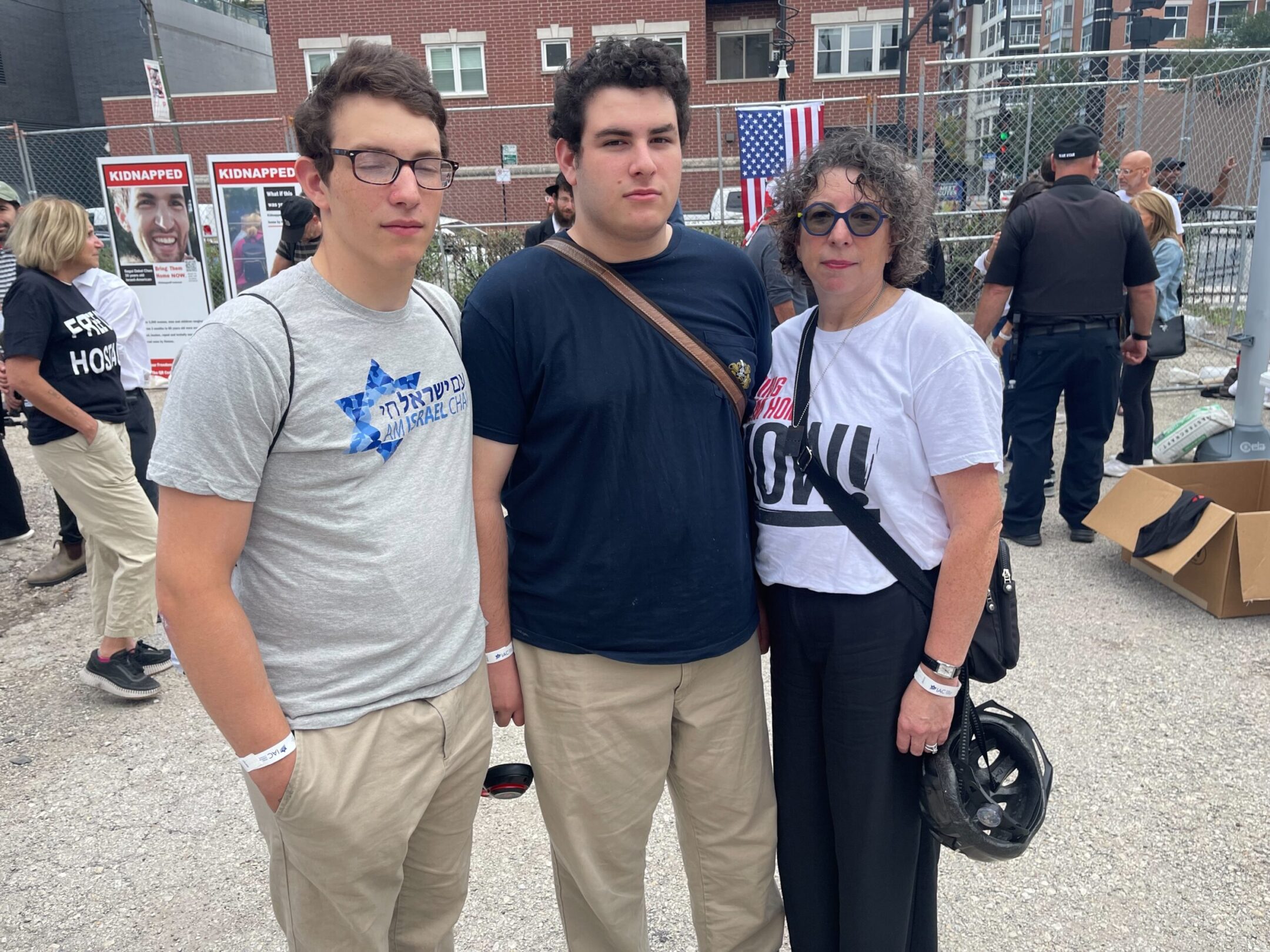
Debbie Schwartz and sons Isaac, left, and Aaron visited a “Hostage Square” installation in Chicago, Aug. 20, 2024. (Ron Kampeas)
Kim Keiserman, a Democrat running for New York State Senate in the district that’s home to Neutra’s parents, said she felt visitng the Hostage Square installation was the least she could do.
“It really evokes the enormity of the situation and the tragedy, but also the fact that no one is giving up hope on bringing home these hostages,” said Keiserman, a delegate to the convention who is not Jewish.
Hope for the hostages’ release appeared to be dimming yet again on Tuesday, as Hamas rejected the latest demands by Israel and Israeli Prime Minister Benjamin Netanyahu cautioned hostage families in Israel that he was not certain a ceasefire deal could be reached.
Debbie Schwartz of Chicago had visited Hostage Square in Tel Aviv and brought her sons, Isaac, 15, and Aaron, 20, to the Chicago version to try to replicate the experience.
“It tells a little bit of their story,” she said. “It shows their pictures. It makes their memories more present, I think.”
JTA has documented Jewish history in real-time for over a century. Keep our journalism strong by joining us in supporting independent, award-winning reporting.
